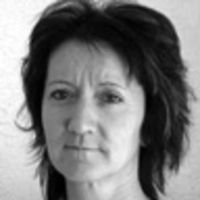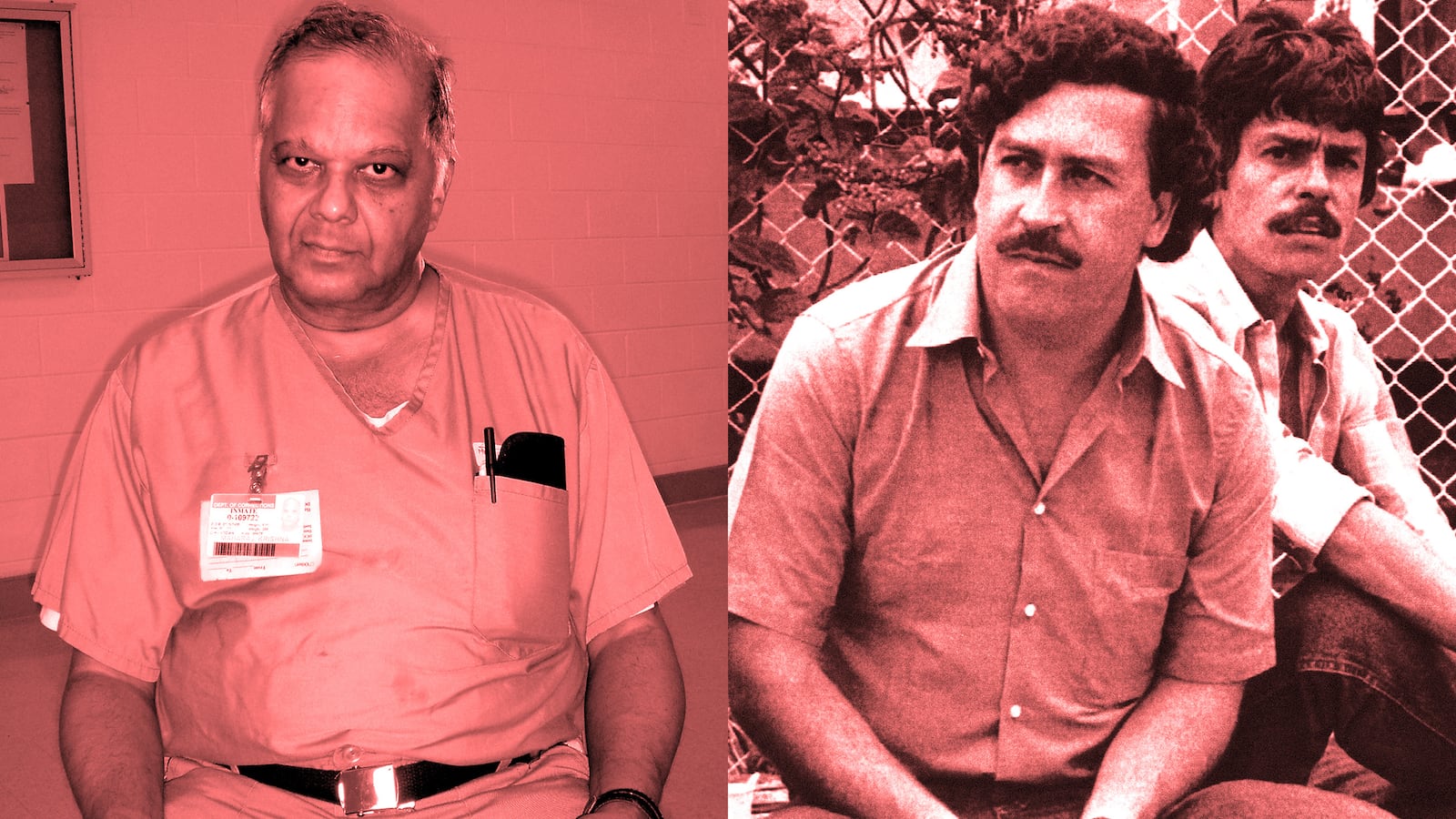It should have seemed obvious when two men were murdered in room 1215 of Miami’s DuPont Plaza Hotel that the member of the Colombian drug cartel staying in room 1214 might have warranted a second glance.
Under investigation by the Drug Enforcement Agency for helping to launder $40 million of cocaine cash through Swiss banks, Jaime Vallejo Mejia was, however, one of many “red flags” that never got run up the Miami Police Department’s flagpole.
Despite numerous cartel clues in the October 1986 murders of father and son Derrick and Duane Moo Young, detectives almost immediately turned their spotlight elsewhere, focusing it instead on Kris Maharaj, a millionaire British businessman whose protestations of innocence have bounced fruitlessly around the judicial system for nearly three decades since.
He was convicted of the murders in 1987 and sentenced to die in Florida’s electric chair. After 15 years on Death Row, that was commuted to two life sentences. At an evidentiary hearing at Miami’s 11th Judicial Circuit Court, Maharaj, now 75, has one last chance to prove his innocence.
According to witnesses and evidence unearthed by British lawyer Clive Stafford Smith and his human rights organization Reprieve, the murders were committed by henchmen for the Medellin cartel, on the orders of the late narcotics kingpin Pablo Escobar. A web of police corruption and prosecutorial misconduct was then spun to cover up the truth, it is alleged.
“You got the wrong guy,” a former pilot for Escobar’s 1980s trafficking operation told the court Monday.
A former Miami police officer, Michael Flynn, also told the court that he had been told by a homicide detective at the time “that Maharaj was innocent…. that he got hooked up for it…. set up.”
He added: “A lot of drug dealers had a bit of an influence with officers in the Miami Police Department.”
Flynn has provided details to Stafford Smith of 18 other homicide cases that he understands were also corrupted, or went uninvestigated in the 1980s and since. Stafford Smith passed the list to the FBI’s Civil Rights Unit in Washington two years ago. “They never got back to me,” he said.
The story of how Maharaj—once one of Britain’s biggest racehorse owners and a keen collector of Rolls Royces—landed on Death Row, and latterly at the South Florida Correctional Centre in Miami, is as colorful as it is complicated.
It is set against the same background brought to life by Miami Vice and Scarface; a city awash in cocaine, corruption and cartel violence, with law enforcement struggling to keep pace. As billions of dollars worth of illicit Colombian narcotics poured into Miami by air and sea during the late 1970s and 1980s, turf wars erupted on the streets. As the body count swelled—forcing the Miami-Dade county morgue in 1981 to lease a refrigerated truck from Burger King to store the corpses—so did the city’s finances; Miami’s banks, it was said, had more money than the rest of America’s combined.
“There was an explosion of violent crime by these Colombian groups and it was mainly drug cartels against drug cartels,” testified Henry Cuervo, a former agent with the US Drugs Enforcement Agency, at the court hearing Monday.
“There was money flowing everywhere… there was a lot of corruption around law enforcement.”
That corruption, says Stafford Smith, provided the opportunity for a “frame-up of epic proportions.”
“Kris Maharaj was framed for murder at the height of the city’s cocaine high,” he stated in a 2012 court filing. “Whether addiction took the form of all-out corruption—defined as cash or threats translated into criminal courtesies—or merely a willful bias in the criminal justice system, the influence of cocaine trafficking was a profound and lasting inhibition of justice.”
Maharaj, who lived largely in London with his wife Marita and had property and business interests in south Florida, knew the Moo Youngs because they shipped him bananas from Jamaica as part of his UK-based food import/export business.
But at the time of their murders he had been suing them in civil court for allegedly embezzling money. That, said prosecutors at his 1987 trial, gave him a motive for murder. Plus his fingerprints were found in room 1215 of the DuPont Plaza Hotel—and a ‘star witness’, Neville Butler, claimed to have been with him when he carried out the fatal shootings.
Maharaj’s version of events—that he had been lured to a business meeting at the hotel by Butler the day before, made to sit in room 1215 for an hour waiting for a contact to turn up, then left when no one arrived—won no traction with the police.
Had detectives looked closer into Butler’s background, and that of Eddie Dames—the man in whose name room 1215 was booked—and of Adam Hosein, a man who had placed calls to the room on the day of the murders—alarm bells may have sounded.
All “are now known to have been narcotics trade operatives associated with the Colombians,” Maharaj’s lawyers assert in court filings.
And Tino Geddes, a journalist who testified against Maharaj at trial, despite having previously provided him with an alibi, was an associate of the Jamaican Shower Posse—a powerful drug gang that worked with the cartel. Geddes died of cancer in 2011.
The claims are based on statements given by cartel members and associates, to whom Stafford Smith and investigators for Reprieve gained access in Colombia, the U.S. and Jamaica, sometimes at risk to their own lives.
Appearing in court under the pseudonym John Brown, the former pilot who smuggled drugs for Escobar agreed to testify only on condition of anonymity, because he fears for his safety and the lives of family members.
The Moo Youngs were not the simple $20,000-a-year businessmen portrayed by the prosecution at Maharaj’s 1986 trial, the court heard Monday. Unbeknown to Maharaj, they were also secretly money-launderers for the cartel, offering hundreds of millions of dollars in loans around the Caribbean, negotiating to buy a bank in Panama for $600 million and attempting at one point to purchase $100 million in precious gems, according to documents presented in court.
During a poolside meeting at Escobar’s Colombian estate in December 1986, Escobar had a conversation with ‘John Brown’ about people who he had either had “whacked” or wanted to have “whacked”. Among those accomplished, said Brown, were men that Escobar referred to as “los chinos” —the Chinese—in a hotel that matched the description of the DuPont Plaza. The Moo Youngs were Jamaicans of Chinese descent.
“He said one chino had stolen from him …. they had stolen from him and he had them killed,” ‘John Brown’ told the judge Monday.
Jaime Mejia, staying in room 1214, was the moneyman and organizer for the murders, Stafford Smith claims in court documents. The assassins were Manuel Guillermo Zuluaga Salazar—a hitman for Escobar who operated under the nickname The Blade and Jhon Henry Millan, known as El Chino, who was wanted in Colombia for several hundred homicides. Salazar ultimately met his end when he was fed alive into a sugar cane threshing machine in Colombia by members of the rival Cali cartel.
Yet it was Maharaj who was convicted. His lawyer in 1986, who is now a judge, failed to produce any of Maharaj’s five alibi witnesses at trial—witnesses who put him 30 miles from the scene of the crime. Nor did that lawyer request a new trial after the judge presiding over it was arrested on the fourth day, accused of taking bribes in a separate case.
This week’s evidentiary hearing is for Judge Thomas to consider whether the witnesses and evidence brought to light by Stafford Smith and Reprieve merit him granting a new trial.
Prosecutors have fought the process, insisting that Maharaj is guilty and must remain behind bars. “Every single witness is inadmissible, hearsay, triple-hearsay,” said assistant state attorney Penny Brill in court yesterday. “Absolutely, 100 per cent, not one piece of admissible evidence….or credibility.”
Maharaj said during an interview in July at the South Florida Correctional Centre, a federal prison on Miami’s outskirts: “This was a conspiracy of unspeakable magnitude…I want the truth told, and the knowledge that this will never happen to another person for as long as I’m alive or dead. There is no amount of money that can repay me for this 27 years of hell.”





